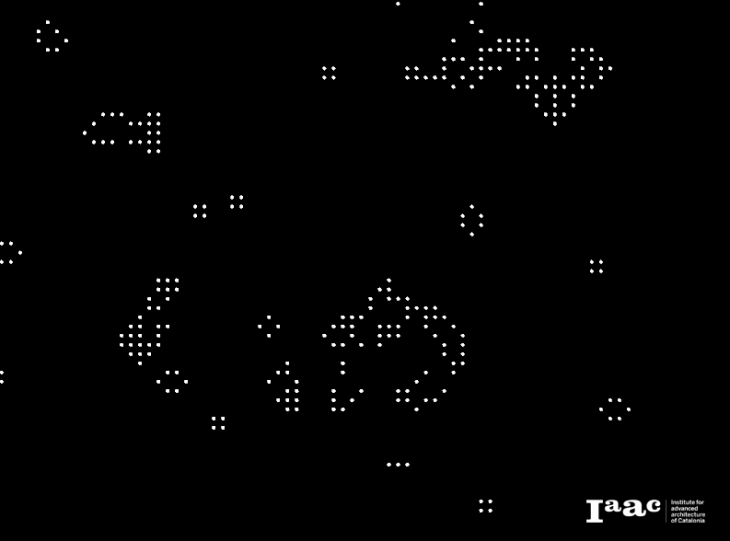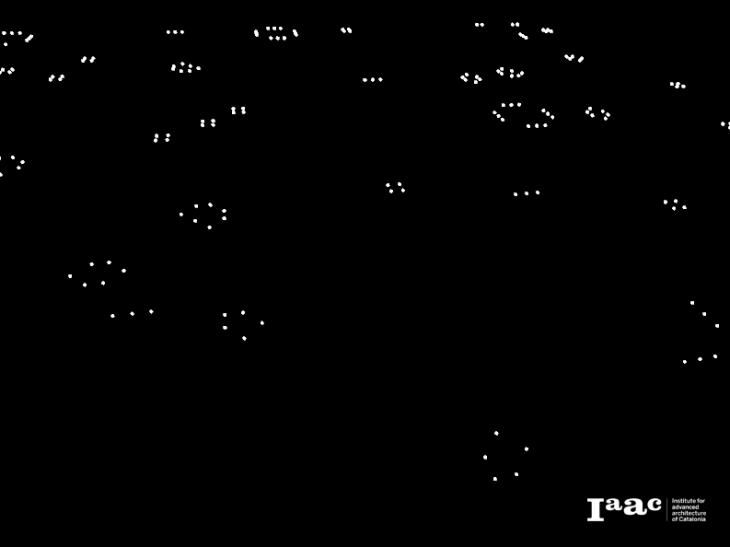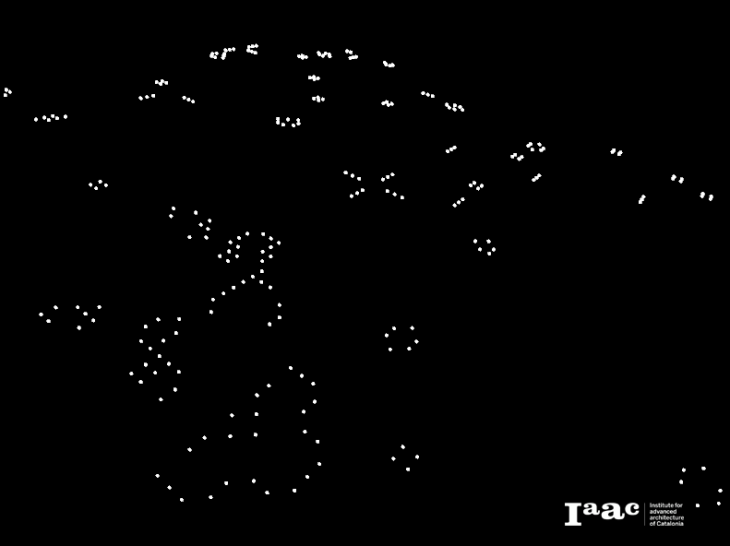This algorithm is a clear example of how a set of simple rules controlling local variables, combined with statistical randomness (entropy) can generate a practically infinite number of unique patterns or configurations.
The rules of the game dictate that a particular cell on a regular square grid is either ‘off’ (dead) or ‘on’ (alive) based on the ratio of ‘dead’ to ‘alive’ cells around it (the eight cells immediately adjacent to it).
- Any live cell with fewer than two live neighbours dies, as if caused by underpopulation.
- Any live cell with two or three live neighbours lives on to the next generation.
- Any live cell with more than three live neighbours dies, as if by overpopulation.
- Any dead cell with exactly three live neighbours becomes a live cell, as if by reproduction.
These rules, by analogy, may be described as the genetic code or genotype according to which the cells interact. Given an initial configuration, the game then cycles through ‘generations’ with each change in the ‘dead’ or ‘alive’ state of cells. The initial configuration (representing a randomness factor) sets off a chain reaction of continuous morphological change with an infinite number of possible configurations or events. A slight difference in the initial configuration or a minor alteration in the chain of events becomes amplified throughout subsequent generations and produces a unique and unforeseeable pattern every time the game is run.
This principle is, in effect, analogous to chaos theory or, more accurately, to a phenomenon known as the ‘edge of chaos’ where an active system (the game) is held in equilibrium between order and disorder (entropy). As long as the game maintains intself at this threshold (state of ‘phase transition’ between order and disorder), it will not stagnate and the chain of causality resulting from complex interactions between cells will continue.
The algorithm can therefore be seen as a simplified simulation of the chaos principle; an infinite number of possible events or iterations arises from a complex, autonomous system which is based on an orderly set of rules enabling its individual components (cells) to adapt to conditions in their environment. By extension, this also reflects the basic mechanism of evolutionary change.


